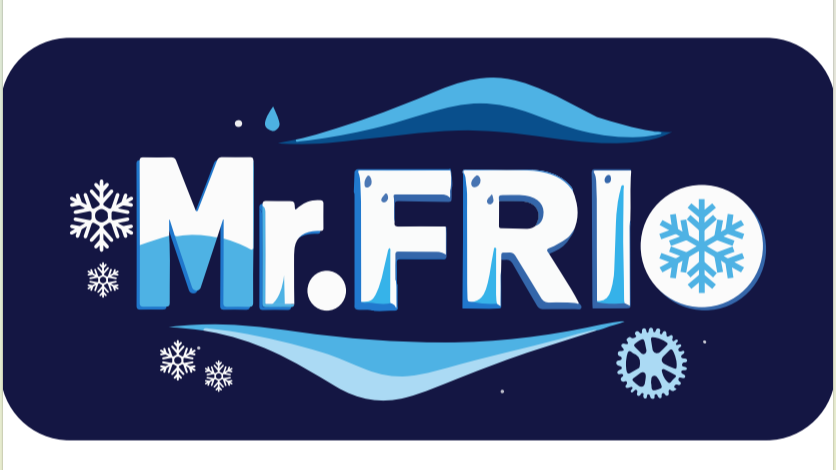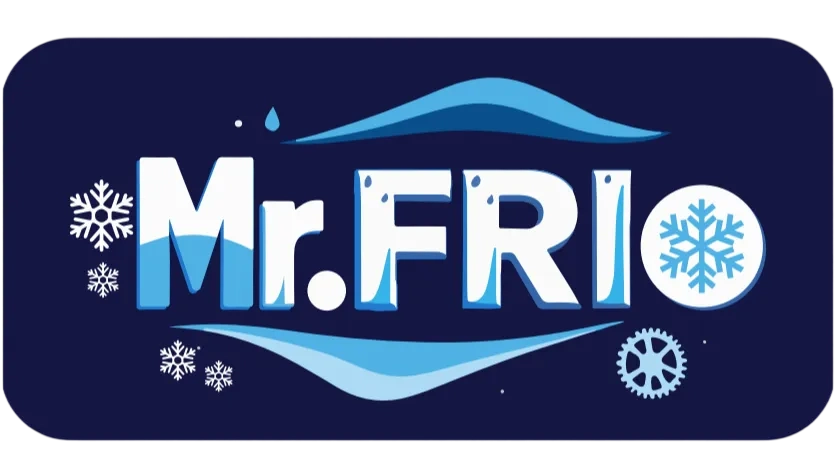The Science Behind Shock Freezing Technology
How Rapid Temperature Reduction Preserves Quality
Shock freezing works by dropping temperatures super fast, which helps keep food quality intact. When cells don't get damaged during this quick freeze, the food keeps its original taste, feels just right when eaten, and holds onto most of what makes it nutritious. The USDA has some research showing that fruits and veggies frozen this way hold onto around 90% of their good stuff, way better than regular freezing methods. For businesses in the food sector, this tech is a game changer because it can bring food down to about minus 18 degrees Celsius or zero Fahrenheit pretty quickly, sometimes within just a few hours. This fast cooling extends how long food stays fresh on store shelves without losing those important characteristics we all look for in our meals.
Ice Crystal Formation: Slow vs. Shock Freezing
When it comes to how ice forms during freezing, there's a big difference between taking things slow versus using shock freezing techniques. With slow freezing, we tend to see those big ice crystals forming inside the food. These larger crystals actually tear through cells, messing up both texture and overall quality of what we eat. On the flip side, when foods get frozen quickly through shock freezing, they form much smaller ice crystals. This helps keep the food structure intact for longer periods. Research indicates that items frozen slowly suffer from more freezer burn problems and lose their original texture faster compared to those subjected to quick freezing processes. What happens here is pretty straightforward physics really the speed of freezing stops those massive crystal formations from happening, so our food stays looking and tasting better over time, which obviously matters a lot to anyone who cares about what ends up on their plate after being stored in the freezer.
Cold Room Applications for Fruits & Delicate Items
Shock freezing really depends on good cold rooms to keep things working right. These temperature controlled spaces create the best conditions possible for keeping fresh produce from going bad too fast, especially important stuff like seafood that spoils quickly. What makes these systems so effective is their ability to hold steady at those super low temps, which stops bacteria growth and keeps food safe much longer than it would otherwise. For grocery stores and restaurants alike, having proper cold storage means they can stock up without worrying about quality dropping off. Plus there's money saved when less gets thrown away because of spoilage. Fresh fruits stay crispier, delicate meats remain tender, all while operators get extra days before needing to rotate stock, making the whole operation run smoother financially speaking.
Extended Shelf Life & Nutrient Retention
When food gets shock frozen, it stays good for much longer than regular freezing methods. Some items can last several years on the shelf without going bad. The Food and Agriculture Organization has actually studied this stuff and found that frozen foods keep most of their nutrients intact over time. That makes all the difference for people who want fresh fruits and vegetables throughout the whole year, especially when certain seasons don't cooperate. What really matters though is how the food tastes and feels after being frozen. Shock freezing does a better job at keeping everything from getting mushy or losing flavor. Most importantly, the nutritional content doesn't drop off as quickly either. For businesses selling food products, this means they can offer consistent quality no matter what time of year it is. Customers end up happier because they get what they expect every single time they buy something.
Preventing Bacterial Growth in Perishables
Shock freezing works by rapidly lowering temperatures to stop bacteria from growing on food, cutting down health risks significantly. Food safety experts have tested this method against dangerous germs like E. coli and Salmonella, finding it really does make food safer during transport and storage. When frozen fast enough, bacteria simply can't multiply properly. This matters most for things that spoil quickly, where keeping food safe meets strict regulatory requirements. The safety boost means people stay healthier and companies avoid costly recalls while still following all those complicated food safety rules. Across the food supply chain, shock freezing has become essential for preserving quality without compromising on safety standards.
Cost Efficiency Through Bulk Processing
Shock freezing cuts down on expenses because it lets companies process lots of perishable goods all at once, making things run smoother and saving money for businesses. When they freeze big batches of food, there's less chance of stuff going bad or getting lost during handling, so the wallet stays fuller at the end of the month. The whole operation gets cheaper too since workers spend less time preparing and storing food, plus there aren't those annoying interruptions when something goes wrong. Frozen items last much longer without losing quality, which means companies don't have to worry about running out or throwing away expired stock as often. For anyone looking to stay ahead in today's tough markets, investing in shock freezing tech makes sense both for managing resources properly and keeping profits coming in despite competition from other players.
Shock Freezing vs. Blast Chilling: Key Differences
Temperature Thresholds & Processing Times
When looking at shock freezing versus blast chilling, temperature differences really matter. Shock freezing works at about -18°C or colder, which means things freeze super fast. Blast chillers run closer to 0°C instead. Because shock freezing gets products frozen so quickly, they spend less time sitting in those dangerous temperature zones where bacteria can grow. That's why many food processors prefer it for preserving quality. The big temperature gap between these methods makes all the difference in how well food stays fresh and safe during storage. Most operators will tell you shock freezing gives better results when freshness matters most, especially for high value products that need maximum shelf life.
Liquid Shock Freezing vs. Air-Based Methods
Shock freezing with liquid nitrogen works differently from regular air freezing because it cools things down almost instantly. The main advantage here is that it creates way fewer ice crystals inside the food or product being frozen. This means better texture and overall quality compared to air freezing methods that take much longer to work. Sure, air freezing might save money on equipment costs, but what people don't always realize is how much quality gets lost in the process, especially for stuff that goes bad quickly. Looking at actual results from various tests, liquid shock freezing really shines for products where keeping quality intact matters most. Think about those delicate foods or sensitive materials that just cannot handle the kind of ice damage that happens with slower freezing techniques.
Optimal Use Cases for Each Technique
The decision about which freezing method works best really comes down to what the product needs, how long it should last on shelves, and what kind of storage space is available. Shock freezing tends to work great for expensive stuff like fresh seafood and handcrafted foods where we want to avoid too much ice crystal formation that can ruin the texture and taste. Restaurants often go for blast chilling instead when they need to cool down cooked dishes fast but don't want them actually frozen solid. Picking between these options boils down to weighing how important quality stays versus what kind of food we're dealing with. Each approach fits different situations in the food industry based on these factors.
Commercial Shock Freezing Solutions
Indoor Commercial Packed Ice Bags Freezer (Single Door)
Single door freezers work really well for businesses needing to quickly freeze packed ice bags without losing access to inventory. These units come equipped with advanced insulation tech that keeps temperatures stable inside, which means food stays safe during storage. The small footprint makes them perfect for fitting into tight spots in commercial kitchens or back rooms where every inch counts. Many convenience stores, delis, and small restaurants find these models especially useful when they have limited freezer space but still need reliable cold storage solutions for perishables.
High-Capacity 30cuft Ice Merchandiser Cabinet
The 30 cubic foot ice merchandiser cabinet has been built specifically for bigger businesses needing to freeze and store large amounts of ice products. These cabinets come equipped with energy saving features that keep air circulating properly so the ice stays solid and available when needed. Supermarkets and convenience stores that go through tons of ice every day find these units indispensable. The sturdy construction helps maintain good ice quality throughout the day, ensuring customers always have access to fresh ice without any interruptions in service.
Slant-Door Cube Ice Freezer Box (38cuft)
Slant door freezers really boost how well operations run because they let people get into them easily and grab ice faster than traditional models. These units come with plenty of space too - around 38 cubic feet total storage area makes them work great whether someone needs them for daily kitchen use or bigger occasions like weddings or festivals where lots of ice gets used up quickly. The cooling system inside isn't just basic either; it's designed so the temperature stays super low right away which keeps the ice quality consistent over time. Restaurants especially appreciate this feature when they need constant supply without worrying about melting issues during busy service hours.
Outdoor -18°C Ice Storage Cabinet (125 Bags)
These ice storage cabinets work great outdoors, keeping things frozen cold no matter what kind of weather hits them, so they're reliable when placed outside. They can hold lots of ice bags inside, which makes them really useful at places like music festivals or food trucks during summer events where people need tons of ice fast. Built tough against the elements, these freezers keep running smoothly whether it's raining cats and dogs or baking hot outside. That means businesses don't have to worry about their ice melting away or running out mid-event.
Choosing the Right Shock Freezing Equipment
Capacity Requirements & Space Considerations
Getting clear on what capacity is needed and how much room is actually available matters a lot when picking out shock freezing equipment. Equipment that matches up with actual business needs stops problems such as not getting enough use out of it or pushing it beyond its limits. Businesses need to look at their inventory storage requirements to figure out what size equipment works best for them. Looking at the actual floor space within the facility helps make better choices about which models and configurations would fit properly. Taking time to do this kind of assessment leads to better inventory control throughout the operation and keeps things running smoothly without unnecessary bottlenecks.
Energy Efficiency & Cold Wall Technology
Adding energy saving elements such as cold wall tech to shock freezers really cuts down on running expenses over time. Cold wall systems work great at cutting power usage sometimes around 30% or so which means big money saved on electric bills after a few years. Freezers that come with better insulation keep things colder without needing extra energy all day long. These kinds of improvements make businesses greener while they save cash too. Most companies find these upgrades pay for themselves pretty quickly when looking at monthly operating costs.
Weatherproofing for Indoor/Outdoor Use
Picking out weatherproof shock freezing gear matters a lot for companies working across different environments. Equipment that stands up to the elements keeps performing reliably no matter where it's located, handling changes in humidity and temperature without missing a beat. Outdoor event planners especially need this kind of protection since their operations can be exposed to all sorts of weather conditions. Same goes for businesses that move their freezing units around from one place to another. The ability to function smoothly indoors or outdoors makes these weather resistant models really valuable across various business scenarios, from food service locations to construction sites and everything in between.


